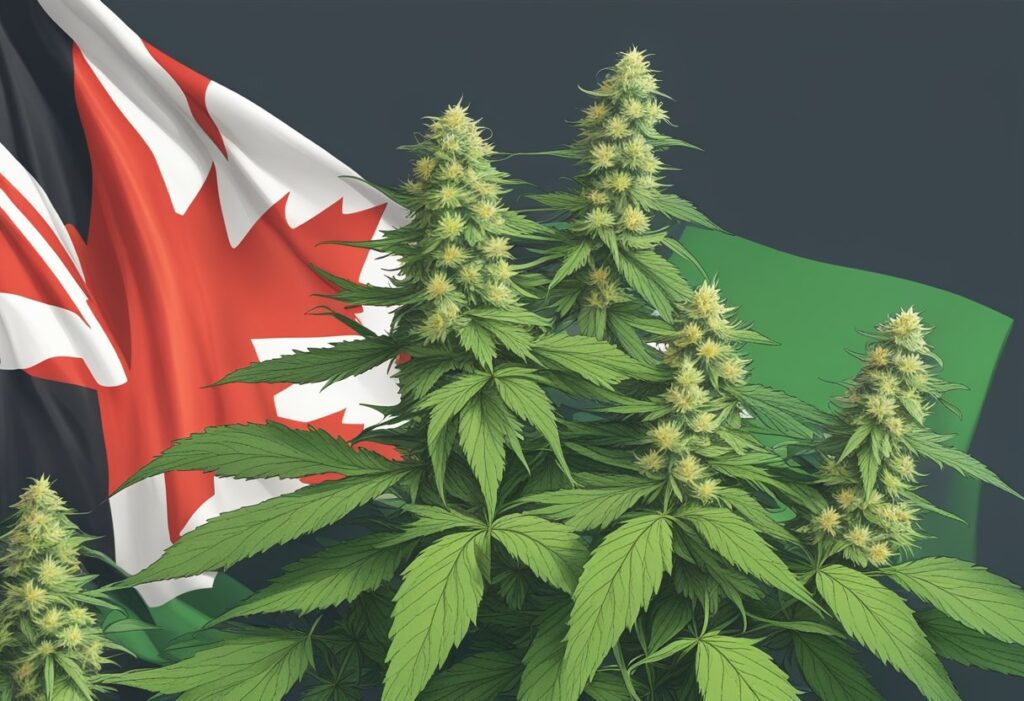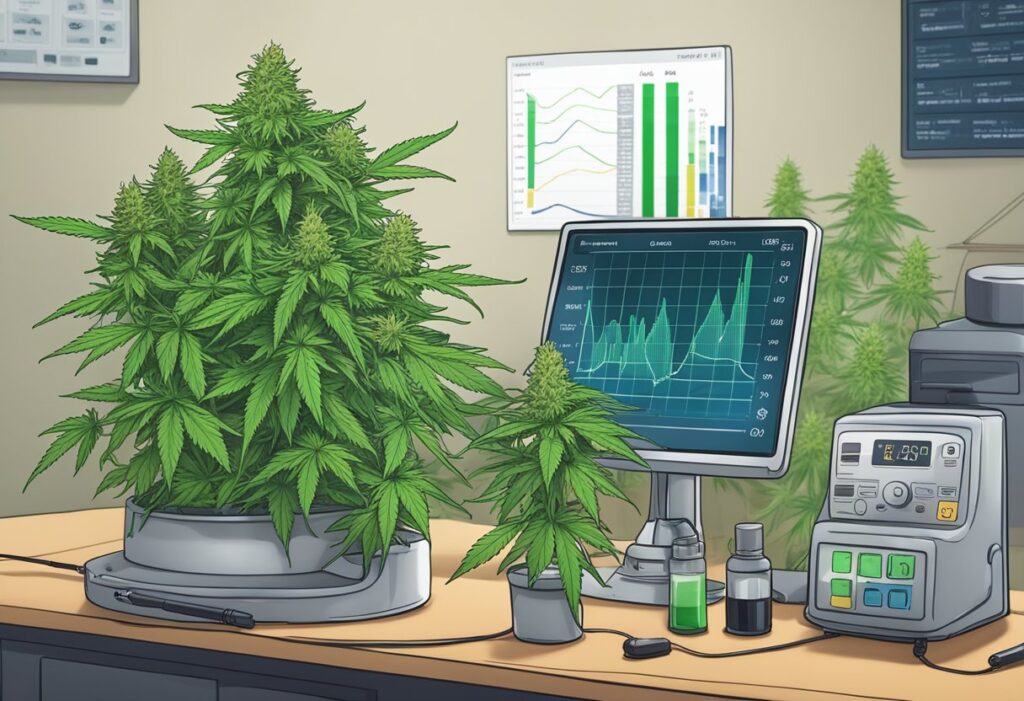
Exploring the cannabinoid profiles of autoflower seeds in Canada reveals a fascinating aspect of cannabis cultivation. Autoflowers, known for their unique ability to flower automatically without a change in light schedule, offer a wide range of THC and CBD levels tailored to diverse needs and preferences. Whether you seek therapeutic relief or recreational enjoyment, understanding these levels is crucial. This guide delves into the significance of THC and CBD in autoflowering strains, providing insights into their effects, usage, and the legal landscape surrounding them in Canada. Through this exploration, individuals can make informed decisions, ensuring they select strains that best suit their requirements.
When considering autoflowers, THC (delta-9-tetrahydrocannabinol) and CBD (cannabidiol) are the most prominent cannabinoids in cannabis plants. THC is renowned for its psychoactive effects, giving you a feeling of euphoria. CBD, on the other hand, is non-intoxicating and often linked to medicinal benefits, offering a sense of relaxation without the high.
Autoflowers are unique in the cannabis world due to their genetics. They are typically a mix of sativa, indica, and ruderalis strains. The presence of ruderalis genetics induces automatic flowering regardless of the light cycle. Your autoflowering plants will usually exhibit varying THC and CBD levels, often with a higher CBD percentage, influenced by their genetic composition.
When you’re choosing an autoflower strain, consider the original genetics:
These genetic backbones chart the path for growth patterns and cannabinoid profiles you can expect in your autoflower cannabis plants.

Navigating the legal and cultural environment of THC and CBD levels in Canadian autoflowers is essential for understanding the market and compliance. Let’s explore the Cannabis Act, gain insights from the Canadian Cannabis Survey, and clarify prevalent misconceptions.
The Cannabis Act is the federal legislation that governs the production, distribution, sale, and possession of cannabis across Canada. Health Canada is the federal body responsible for the oversight of this act. Regulations can vary between provinces such as Alberta and British Columbia, with each province having the authority to set their own specific rules regarding the retail structure and consumption laws.
The presence of autoflower cannabis strains in the market is legal provided they are compliant with both the federal and provincial regulations.
The Canadian Cannabis Survey provides valuable data on consumer patterns and perceptions. Findings from the survey indicate that:
These trends suggest not only a consumer preference but also reflect the regulatory environment which influences product availability and usage in regions such as Edmonton and beyond.
It’s imperative to clarify misconceptions and understand legal terms:
Remember, each province—whether it’s Alberta or British Columbia—may enforce the federal law with its own unique set of standards.

Autoflower cannabis varieties, with their unique growth traits and cannabinoid profiles, offer diverse effects and uses. Whether you’re looking for medicinal benefits or recreational enjoyment, understanding the intricacies of autoflower strains can enhance your experience and meet your specific needs.
Autoflower cannabis strains can be rich in CBD, a compound revered for its potential therapeutic effects without a significant psychoactive impact. Medical cannabis users often seek out strains with higher CBD percentages to manage conditions such as chronic pain, multiple sclerosis, and inflammation. These strains may also aid in alleviating nausea, common in chemotherapy patients, and anxiety symptoms. It’s worth noting that the balance of cannabinoids, including THC and CBD, along with other compounds like terpenes, can influence the effectiveness of cannabis in treating depression and anxiety.
When it comes to recreational use, autoflower strains can vary in THC levels, offering a range of experiences from mild to potent. You might prefer a strain with lower THC levels for a more relaxing and clear-headed effect or opt for high-THC autoflowers that provide a more intense, euphoric high. Recreational products come in many forms, including dried flower, edibles, and topicals, each delivering different experiences and potency levels. Remember, the endocannabinoid system plays a key role in how you experience the psychoactive and relaxing effects of cannabis.
Autoflower cannabis strains stand out for their adaptability and ease of cultivation, particularly suitable for indoor growing. They automatically transition from the seedling to the flowering stage without a change in light schedules, unlike traditional photoperiod strains. When growing autoflowers, germination technique is vital to ensure successful plant growth and maximizing yield. Autoflowers generally have a shorter life cycle, which can lead to higher yields and more harvests per year. However, due to their compact size, they might produce a smaller yield per plant compared to photoperiod strains.
When exploring autoflowering cannabis strains in Canada, you’re likely curious about their THC and CBD levels. Below, you will find detailed answers to some of your most pressing questions.
The THC and CBD levels in autoflowering strains are determined through lab testing, which identifies the cannabinoid content of the plant material. Growers look for seed varieties that have been lab-tested to ensure the desired potency.
Cannabinoid profiles in autoflowering cannabis plants can be influenced by factors such as genetics, growing conditions, and nutrient ratios. In Canada, the varied climate and growing methods, whether outdoor, indoor, or hydroponic systems, also play a significant role.
Yes, autoflowering cannabis can have high THC content. For example, strains like Bruce Banner Autoflower have been known to reach THC levels up to 26%.
The CBD to THC ratios in autoflower strains can vary greatly, from high THC and low CBD to balanced ratios and even high CBD with trace amounts of THC. Autoflowers can exhibit similar ratios to photoperiod strains, but selections like CBD Haze Autoflower can test up to 8% CBD, emphasizing medicinal properties.
Variations in cannabinoid levels can occur due to differences in growing conditions such as soil composition, temperature, humidity, and lighting. Even within the same strain, each individual plant can exhibit a unique cannabinoid profile.
We ship and deliver world wide via USPS and various couriers.
We offer a wide range of secure and anonymous online payment options.
We care about you, our customer. Please contact us with any questions or concerns.
Find out more about the benefits of being a loyal and regular customer.
WE ARE EVERY GROWERS ONE STOP SHOP TO ACQUIRE PREMIUM CANNABIS SEEDS FOR SALE IN THE USA, CANADA AND AUSTRALIA

Farmers Lab Seeds 2024, | All Right Reserved
Seeds are sold as novelty items, souvenirs, and collectibles. They contain 0% THC. We encourage our customers to check the legislation in their Country, State, Province, and Municipality prior to purchasing items from our store. We do not provide growing information.
All seeds are sold as hemp, and lab tested under 0.3% THC. This product is not for use by or sale to persons under the age of 21. This product should be used only as directed on the label. It should not be used if you are pregnant or nursing. Consult with a physician before use if you have a serious medical condition or use prescription medications. A Doctor’s advice should be sought before using this and any supplemental dietary product. All trademarks and copyrights are property of their respective owners and are not affiliated with nor do they endorse this product.
These statements have not been evaluated by the FDA. This product is not intended to diagnose, treat, cure or prevent any disease. Individual weight loss results will vary. By using this site, you agree to follow the Privacy Policy and all Terms & Conditions printed on this site. Void Where Prohibited by Law.